Painted wood gives a beautiful and natural feel but the problem is that if placed outdoors, the wood will get damaged. So, how to seal it for outdoor use?
You can seal painted wood for outdoor use by covering it with a few coats of polyurethane or exterior varnish. Polyurethane and varnish are waterproof sealants that will seal a surface and protect it from different elements.
You are watching: How to Seal Painted Wood for Outdoor Use? (4-Steps)
If you don’t want to use a sealant, you can use a wood sealer. However, if you are on a budget, you can go for waterproof paint like exterior latex instead of buying the sealant.
What Are The Benefits of Sealing Painted Wood for Outdoors?
The benefit of sealing painted wood for outdoors is that you protect it against all types of water damage. If the wood is used outdoors, it will be exposed to all sorts of harsh conditions that it isn’t exposed to indoors.
Nothing damages it faster than water and when it is used outside, it will be exposed to high humidity levels and constant rainfall.
If it is left exposed and without a sealant, it will become waterlogged and will eventually rot. However, if there is a sealant, the sealant will protect it against water damage.
Here are other benefits:
1. To Preserve the Finish
When wood is painted, it dries to form a beautiful finish. It can be a matte, eggshell, semi-gloss, or high-gloss finish depending on the type used. The finish can also be a certain color or have no color at all.
Regardless of the type of finish that you get, it will not last long if you don’t seal it. However, if it’s sealed, the sealant will protect it from moisture, dents, scratches, and stains making the finish last longer. You can even retouch the sealant when it gets old while the finish underneath remains protected.
2. To Prevent Mold Growth
When wood is exposed to moisture, contaminants, and air, it will develop mold sooner or later because all of the requirements needed for mold are present.
However, when the wood is sealed, it becomes impossible for mold or fungi to grow on it. Some sealants even have mold-killing additives to stop and prevent mold growth.
3. To Get a Glossy Finish
Paints especially the water-based types hardly have any sheen and when applied, all you get is a colorful but dull finish.
So, to improve the luster of the finish and make it shine, you can apply a high-gloss sealant over it. When dry, these sealants will reveal a transparent but glossy finish.
When Should You Avoid Sealing Outdoor Wood?
You should avoid sealing outdoor wood for the following cases.
1. If it Has an Existing Sealant
If there is an existing sealant, do not seal it. In this case, you can only seal it after stripping or sanding off the existing sealant.
Read more : How to wax furniture
To know if there is an existing sealant/sealer, use the water test. To do this, sprinkle some water directly on the surface and wait a few minutes. If the water is absorbed into the surface, then there is no sealant.
If you notice that the water starts to dissolve the color of the finish, it also means there is no sealant and you can apply a new one.
However, if the water has no effect on the surface and just remains on it, then there is an existing sealer on it that needs to be removed before a new one is applied.
2. If Waterproof Paint Was Used
Using waterproof paint will have the same effects as having a sealer. In both cases, the sealer or waterproof paint will not allow the new sealant to stick.
3. If It Has a Unique Finish
If the paint was used to reveal a unique finish, do not seal it or you’ll ruin that particular finish. This is because when a sealant is used, you usually end up with a glossy and reflective finish.
Which Sealers Can You Use To Seal Outdoor Painted Wood?
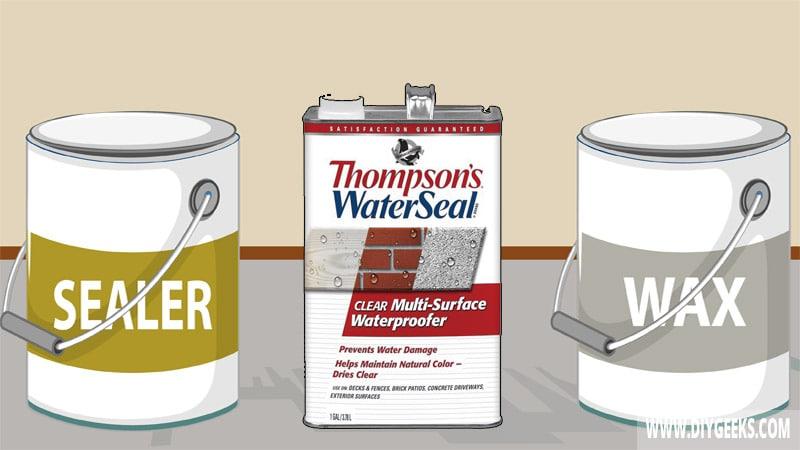
Some sealants and methods stand out over others. Here are the top 3 methods that you can use:
1. Exterior Sealers
Exterior sealers are thick and ultra-durable coats that protect a surface from moisture damage, UV rays, dents, scratches, and UV rays. The durability of exterior sealants is caused by the presence of chemical and solvent-based additives in their formula.
Some sealants also have a good percentage of plasticizers and urethane compounds in their formula making it possible for the finish to stretch and contract based on temperature changes.
Here are amazing options to choose from:
- Exterior polyurethane
- Lacquer (on water-based paints)
- Exterior Varnish
- Spar Urethane
2. Water Sealer
You can also use water sealers like Thompson’s water sealer. But, you need to ensure that the finish is completely dry before applying it.
Water sealers have different formulas depending on the type and brand, but one common feature is that they are waterproof when dry and can be used to protect a surface.
. As an expert tip, always pick a water sealer that is compatible with the type of paint on the surface.
3. Wax
Wax is a jelly-like coat that repels moisture when dry and can be used over outdoor surfaces. You should ensure to purchase waterproof wax because these products often differ based on the brand and type of wax. The Howard Sunshield outdoor furniture wax is a good choice.
How To Seal Painted Wood For Outdoor Use?
When it comes to sealing painted woodwork, DIYers often question the dry time, the number of coats to apply, how long before applying the next coat, and so much more. This guide reveals all the things you need to know.
But first, here are the tools you need:
- Fine-grit sandpaper
- Wood filler
- The required sealer (for this guide, we’ll be using polyurethane)
- Clean rags
- Paintbrushes
- A pair of gloves
- Mineral spirits
- Some paint
1. Wipe and Clean The Surface
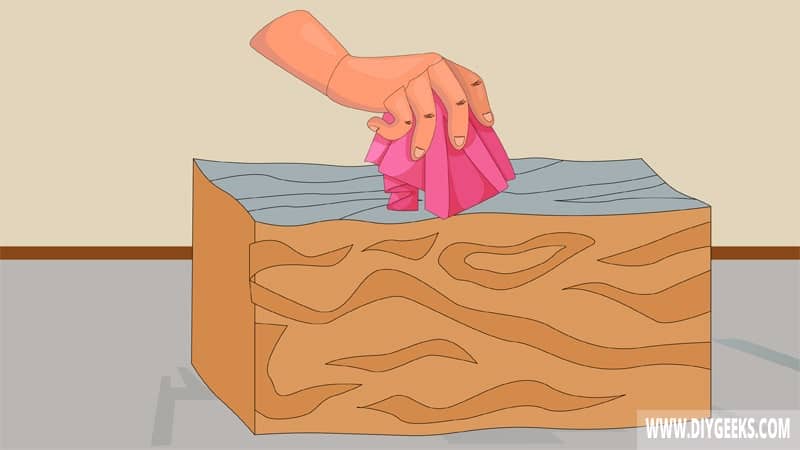
First, wipe and clean the wood. Use a clean rag for this and ensure the rag is dry. If you use a wet rag or filthy rag, the rag can ruin and smear the finish. The purpose of cleaning the rag is to remove dust and stains on it so the sealer can adhere properly.
When the surface is clean, inspect it for dents and damages. If there are discolored or scratched parts on it, you should touch up those areas with a fresh coat of paint.
2. Scuff With Fine Sandpaper
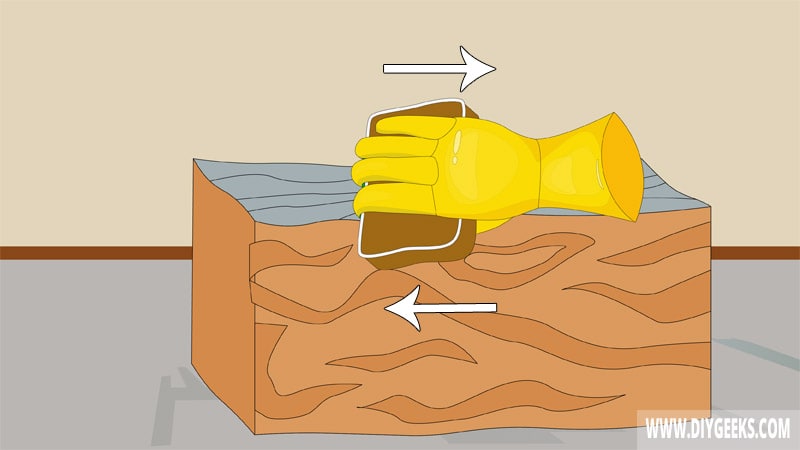
The purpose of scuffing is to create tiny ridges that the sealer can penetrate. It also helps to remove stubborn stains on the finish. Use 320-400-grit sandpaper for this. After sanding, vacuum the dust.
3. Apply The Sealer
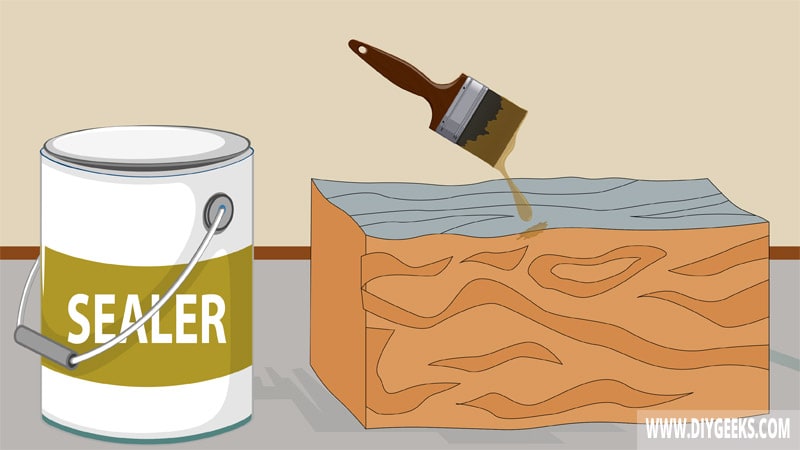
If you are using polyurethane, it’s easy to apply it and you can either use a roller, sprayer, or a brush. You should apply thin coats of it and wait 4 hours between coats.
You don’t have to sand between coats, but a light scuff with 400-grit sandpaper will increase your chances of a perfect finish. You need 3 coats of polyurethane for good coverage and durability.
For other types of sealant, check the manufacturer’s instructions.
4. Leave The Finish To Dry
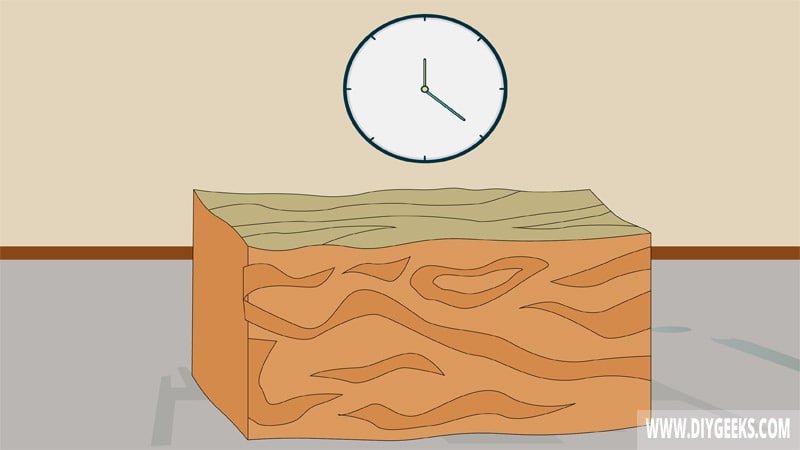
After applying the sealer, leave it to dry for at least 3 days before normal use is resumed. Some sealers especially oil-based types can take up to a week to cure before normal usage can be resumed.
You should seal outdoor wood every 5-10 years. It’s difficult to state when exactly you need to seal it because the frequency is determined by the type of sealer and how often the surface is exposed to rain. For instance, exterior polyurethane can last up to 10 years if applied correctly, while exterior wax doesn’t last that longer.
Can You Seal Any Type Of Wood?
You can seal any type of wood because they generally accept sealers. However, the type of sealer to use is another question. Penetrating sealers, such as oils, generally don’t work well on softwood like Pine because they don’t absorb oils evenly.
Instead of penetrating sealers, you can use polyurethane on softwood because it doesn’t need to penetrate the surface to stick. On the other hand, hardwood like Oak accepts all types of sealers.
The bottom line is you can seal any type of wood but the type of sealer required varies from the type of wood.
Final Words
In summary, you can seal painted wood and you have a wide range of sealers and top coats to pick from. You can go with traditional sealers like polyurethane or water sealers like Thompson’s water seal.
Source: https://gardencourte.com
Categories: Outdoor


